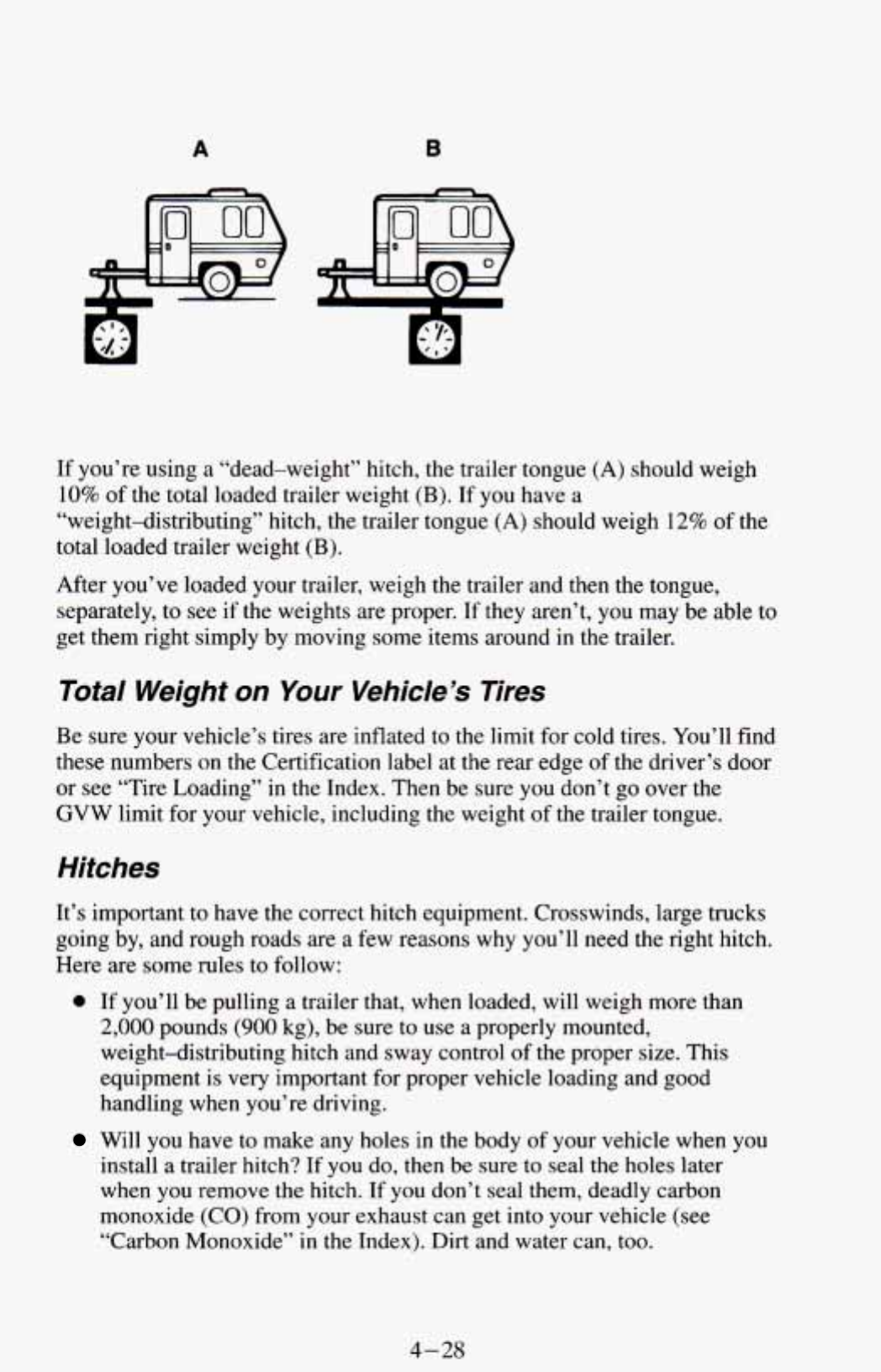
A
If you’re using a “dead-weight” hitch, the trailer tongue
(A)
should weigh
10%
of
the total loaded trailer weight
(B).
If
you
have a
“weight-distributing” hitch, the trailer tongue
(A)
should weigh
12%
of the
total loaded trailer weight
(B).
After you’ve loaded your trailer, weigh the trailer and then the tongue,
separately,
to
see
if
the weights are proper. If they aren’t, you may be able to
get them right simply by moving some items around in the trailer.
Total Weight
on
Your Vehicle’s Tires
Be sure your vehicle’s tires are inflated to the limit for cold tires. You’ll find
these numbers on the Certification label at the rear edge
of
the driver’s door
or see “Tire Loading” in
the
Index. Then be sure
you
don’t
go
over the
GVW limit for your vehicle, including
the
weight of the trailer tongue.
Hitches
It’s important to have the correct hitch equipment. Crosswinds, large trucks
going by, and rough roads are
a
few reasons why you’ll need the right hitch.
Here are some rules to follow:
0
If
you’ll be pulling
a
trailer that, when loaded, will weigh more than
2,000
pounds
(900
kg), be sure
to
use a properly mounted,
weight-distributing hitch and sway control
of
the proper size. This
equipment is very important for proper vehicle loading and good
handling when you’re driving.
Will you have to make any holes in the body of your vehicle when
you
install a trailer hitch? If you
do,
then be sure to seal the holes later
when you remove the hitch. If
you
don’t seal them, deadly carbon
monoxide (CO) from your exhaust can get into your vehicle (see
“Carbon Monoxide”
in
the Index). Dirt and water can, too.
4-28


















